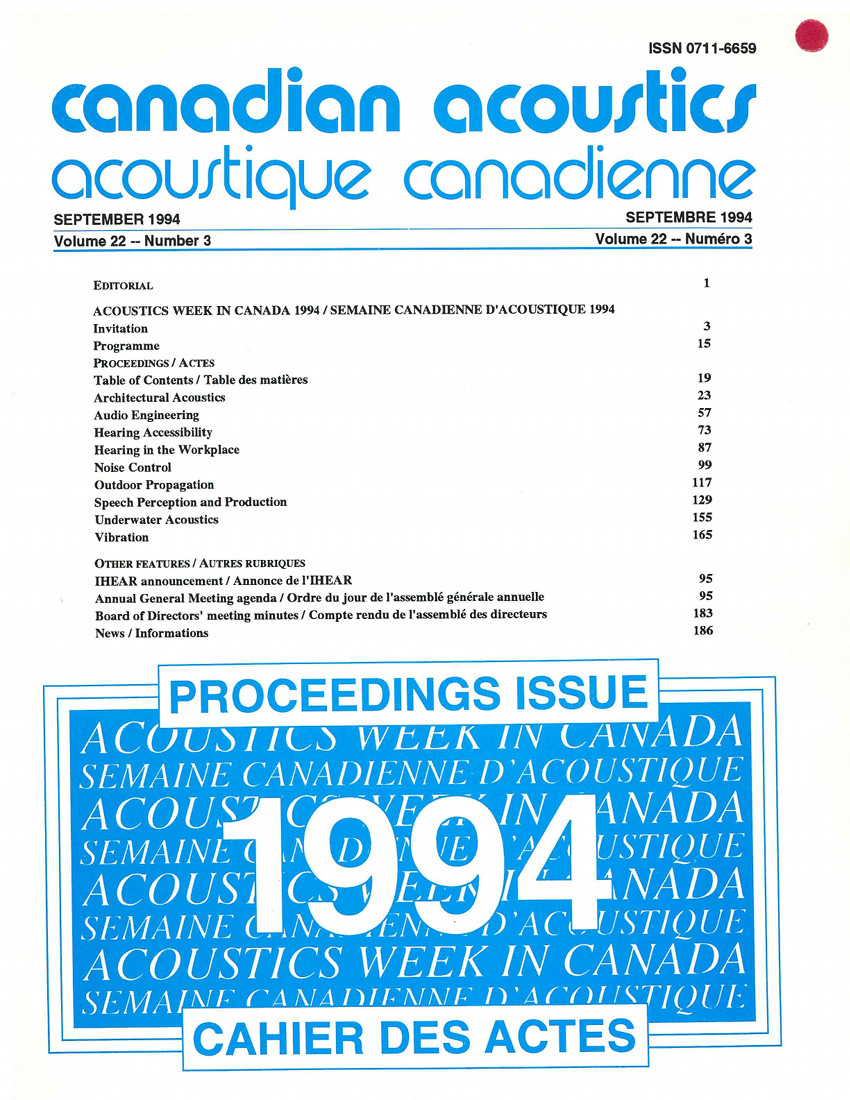When is diffuse-field theory accurate?
Keywords:
architectural acoustics, reverberation, diffuse-field theory, sound fields, rooms, ray-tracing model, sound decay, reverberation time, steady-state sound pressure levelAbstract
Diffuse-field theory is used by practitioners to predict sound fields in rooms of every type. Often forgotten is the fact that the theory is based on assumptions which may limit its applicability. If the theoretical assumptions do not hold in the case of a particular room for which predictions are to be done, the predictions may not be accurate. The objective of this paper is to review what is known about the applicability of diffuse-field theory. This is mainly based on extensive work by Kuttruff (1976) and by the authors comparing predictions by diffuse-field theory and a ray-tracing model. It considers two versions of diffuse-field theory-the Eyring and Sabine versions-and the prediction of both sound decay/reverberation time, and steady-state sound pressure level. Note that both diffuse-field theory an ray-tracing are energy-based models which ignore wave effects and thus may be inherently inaccurate at lower frequenciesAdditional Files
Published
How to Cite
Issue
Section
License
Author Licensing Addendum
This Licensing Addendum ("Addendum") is entered into between the undersigned Author(s) and Canadian Acoustics journal published by the Canadian Acoustical Association (hereinafter referred to as the "Publisher"). The Author(s) and the Publisher agree as follows:
-
Retained Rights: The Author(s) retain(s) the following rights:
- The right to reproduce, distribute, and publicly display the Work on the Author's personal website or the website of the Author's institution.
- The right to use the Work in the Author's teaching activities and presentations.
- The right to include the Work in a compilation for the Author's personal use, not for sale.
-
Grant of License: The Author(s) grant(s) to the Publisher a worldwide exclusive license to publish, reproduce, distribute, and display the Work in Canadian Acoustics and any other formats and media deemed appropriate by the Publisher.
-
Attribution: The Publisher agrees to include proper attribution to the Author(s) in all publications and reproductions of the Work.
-
No Conflict: This Addendum is intended to be in harmony with, and not in conflict with, the terms and conditions of the original agreement entered into between the Author(s) and the Publisher.
-
Copyright Clause: Copyright on articles is held by the Author(s). The corresponding Author has the right to grant on behalf of all Authors and does grant on behalf of all Authors, a worldwide exclusive license to the Publisher and its licensees in perpetuity, in all forms, formats, and media (whether known now or created in the future), including but not limited to the rights to publish, reproduce, distribute, display, store, translate, create adaptations, reprints, include within collections, and create summaries, extracts, and/or abstracts of the Contribution.


